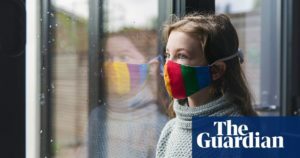Young LGBT+ people are three times more likely to self-harm and twice as likely to contemplate suicide as their non-LGBT+ peers, according to a survey. The research was carried out by Just Like Us, an LGBT+ young people’s charity, which surveyed 2,934 pupils aged 11-18, including 1,140 pupils who identify as LGBT+, between December 2020 and January 2021..
It found that 68% of LGBT+ young people had experienced suicidal thoughts, compared with 29% of young people who were not LGBT+. Lesbian (74%) and transgender (77%) young people were the most likely to have experienced suicidal thoughts and feelings.
Nearly a third of the LGBT+ young people had self-harmed, compared with 9% of the non-LGBT+ young people. Of the Black LGBT+ young people surveyed, 89% had experienced suicidal thoughts and feelings, compared with 67% of the white LGBT+ young people.
Read the full article from The Guardian below:
Source: LGBT+ youths twice as likely to contemplate suicide, survey finds











